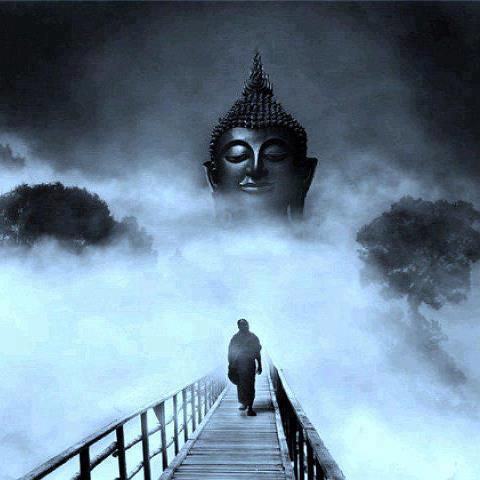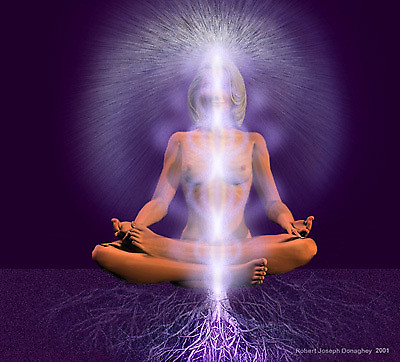 Svadhaswara is the seat of sexual desire, pleasure and nurturing. The sacred art of tantra is a sexual art intended to use the energy created during orgasm to propel Kundalini energy up the spine to inspire instant bliss and enlightenment. This practice remains highly misunderstood, and has been used in a number of books and myths to be more about sexual pleasure than spirituality; none-the-less, the ability to give and receive sexual pleasure, or pleasure in general, does have its home in the sacral chakra.
Svadhaswara is the seat of sexual desire, pleasure and nurturing. The sacred art of tantra is a sexual art intended to use the energy created during orgasm to propel Kundalini energy up the spine to inspire instant bliss and enlightenment. This practice remains highly misunderstood, and has been used in a number of books and myths to be more about sexual pleasure than spirituality; none-the-less, the ability to give and receive sexual pleasure, or pleasure in general, does have its home in the sacral chakra.
What is so important about being able to experience pleasure and give it to others? Well, for one, it is an act of openness and self-affirmation. For another thing, it is extremely conducive to caring and intimacy. Just think what it would be like to have a partner who never experienced pleasure or allowed you to pleasure them. This would create a huge barrier and imbalance in any relationship.
Unfortunately, this problem is all too common. It stems from a closed sacral, or second chakra, and it can be healed through continued intimacy, counseling, meditation and yoga. Often, this is caused by sexual shame, too much guilt, and a number of unhealthy or unacceptable experiences, during youth or at other times in life.
What if, on the other hand, your partner is detached, selfish, overly intense, manipulative, or, becomes too attached and dependent, and only shows affection in a sexual manner? This is a sign of excess in the sacral chakra, and is just as much an imbalance and barrier to love and nurturing. In both cases, meditations and exercises can bring more balance and harmony to the individual and the relationship, helping us learn how to set normal sexual boundaries, allow our own gratification, and care for others, at the same time.
Boundaries are, as matter of fact, a perfect example of what the sacral chakra is really all about. Our natural boundaries are not meant to be emotional blockades or walls barring us from trust and communion with others. Rather, they are a symbol of emotional well-being, self-love and respect for ourselves and others. When the sacral chakra is blocked or imbalanced, however, we either lack the ability to tell others no, or we overuse the ability to a point of loneliness and isolation.
Those who have a problem in the svadhisthana center commonly act as martyrs; over-giving, denying themselves certain foods, sexual gratification, even compliments and love from others. They can also be very promiscuous and pass over true emotional attachment and connection for the more shallow or temporary satisfaction of sex. They may have many partners, and certainly experience a high number of fast and tumultuous relationships.
The favored color of this energy center is orange and simply working more with it and incorporating it into everyday items or surroundings is an excellent strategy for beginning to heal and balance it. Those who have such issues tend to be fond of the color, or, at least some shades of it. There is no reason to use bright orange, as more muted, electric, or darker shades work just as well.
The seed mantra for svadhisthana is vam and can be chanted or sung during focus on the sex center, during meditation, while holding a hand mudra, or while practicing one of the following Yoga postures:
Triangle: Stand with the legs wider than hip width apart, facing the hips forward and holding the arms straight out to the sides. Draw the muscles of the legs up, bend at the hip to the right, letting the right hand come down on the knee, shin or floor, depending on flexibility. Hold the pose and breath deeply into the stretch in the inner thighs. Chant vam and focus on the sacral chakra. Straighten and then repeat to the left.
Draw the muscles of the legs up, bend at the hip to the right, letting the right hand come down on the knee, shin or floor, depending on flexibility. Hold the pose and breath deeply into the stretch in the inner thighs. Chant vam and focus on the sacral chakra. Straighten and then repeat to the left.
 Cobra: Lay on the floor with the hands under the shoulders. Straighten the legs out behind you, feet together. Rest the chin on the mat or floor. Using primarily the muscles in the back, lift the head, neck, shoulders and chest off of the floor, using the hands for support only. Keep the pelvis, hips, lower abdomen and legs pressed into the floor. Hold for ten deep breaths, release, rest and repeat.
Cobra: Lay on the floor with the hands under the shoulders. Straighten the legs out behind you, feet together. Rest the chin on the mat or floor. Using primarily the muscles in the back, lift the head, neck, shoulders and chest off of the floor, using the hands for support only. Keep the pelvis, hips, lower abdomen and legs pressed into the floor. Hold for ten deep breaths, release, rest and repeat.
Find out if your sex chakra is opened or closed by taking a free chakra test here
If the result is positive, check out Carol Tuttle’s blogpost about ways to open the Sacral Chakra



